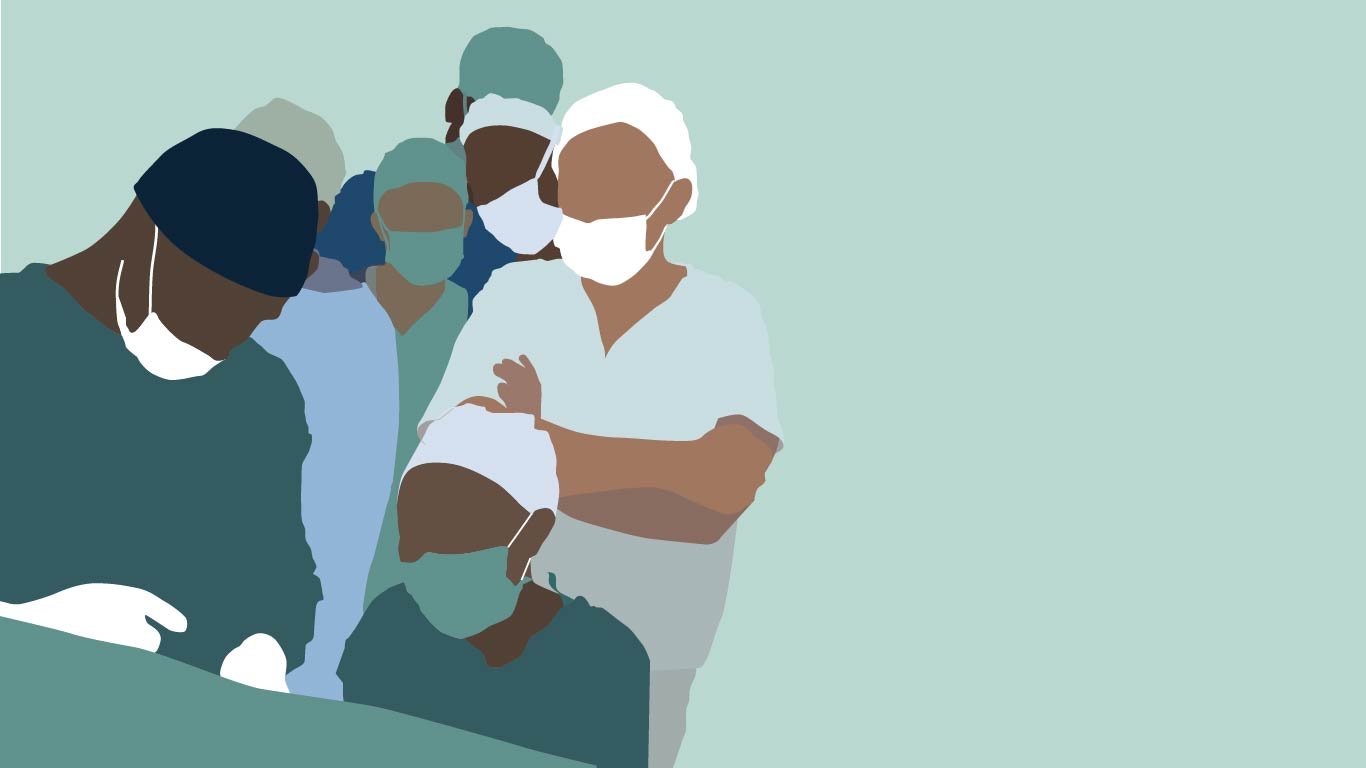MamaBirthie CS
Safe surgery at birth
̌
MamaBirthie CS
Training solution for healthcare teams and students to improve their competencies in cesarean section care through simulation
Context
Laerdal Global Health
Team Project in close collaboration with partner organization Jhpiego
2018-2021
Role
Design Lead
Challenge
This project was the continuation of my master thesis project “Mama-C”. Building on research and insights from my thesis, the aim was to develop a training tool that can be used by international NGOs or local hospitals & medical schools in low-resource settings to train teams on performing safer cesarean sections.
While cesarean sections are a live-saving procedure when they are clinically needed, the intervention is also widely overused in many areas around the world.
To integrate the product well in the existing LGH portfolio and allow users to train for both vaginal and cesarean birth, it was developed as an add-on to the existing MamaBirthie birthing simulator.
Approach
Iterative Development
Our team developed MamaBirthie CS in close collaboration with partners who would later become our first customers and provide an important example of how simulation training can positively impact healthcare worker’s competency and confidence to provide cesarean sections.
Starting with the concept developed during my thesis, we iteratively built and tested prototypes to find out how to best support learner’s and educator’s needs.
Faculty Guide
While simulation training is a widely used methodology in the medical sector, training for cesarean section is still mostly based on apprenticeship. After completing theoretic courses at their university, learners will observe, assist and carry out the procedure on patients.
While learning on real patient cases with a mentor’s support is indispensable, simulation training creates opportunities for learners to get hands-on before encountering real patients and even for experienced teams to get together to train on rare emergency cases.
To support faculty and mentors to integrate simulation training into the learning journey and, we saw a need for guiding materials.
We partnered with ESOG, the Ethiopian Society of Obstetrics and Gynecology, to create a faculty guide. Using the same iterative approach as for the physical product, we tested several drafts of the guide with groups of faculty and learners in Ethiopia and Tanzania.
Outcome
Hands-on skills training
Skills training for cesarean section is often limited to suturing practice on easily accessible materials like sponges, fruit or meat. More specific skills like surgical technique or management of complications are usually learned directly on patients.
MamaBirthie CS can enhance that practice and allow learners to be more prepared before going to the OR. It can be used to demonstrate and practice opening and suturing the different layers of tissue in the abdomen. Learners can also practice to deliver the baby in different positions or to manage a heavy bleeding with compression sutures.
Team Training
Effective communication across the team of healthcare workers is critical for good outcomes of the surgery. The WHO recommends the use of the Surgical Safety Checklist, a tool that is designed to structure and ease team communication and has shown to reduce mortality and complications when implemented well. Equally important is the communication with the mother, who in many cases is conscious during the procedure, and her support person.
MamaBirthie CS is designed to support simulation scenarios that help teams to practice and debrief on their communication skills.
Impact
Since MamaBirthie CS was launched, the product has been used to support various initiatives to improve maternal health outcomes, including this project in Kenya:







